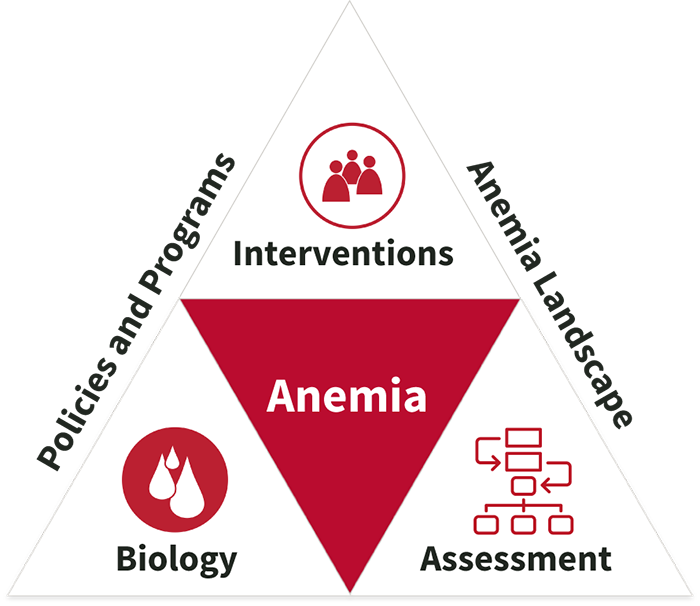The various causes of anemia require diverse and context-specific strategies to strengthen multi-sectoral anemia policy and programming. Policy-makers and program planners have developed population-level policies to reduce anemia to allow for efficient allocation of available resources.
To reach populations in need, translate policies into programs. Practitioners should design these programs designed with an eye for sustainability by incorporating the latest information on cost and cost effectiveness, with the goal of reaching the populations most vulnerable to micronutrient deficiencies and poor health.
We found 62 resource(s)
Evidence of the Effectiveness of Flour Fortification Programs on Iron Status and Anemia: A Systematic Review
Systematic Review published by Nutrition Reviews in
This systematic review synthesizes the evidence pertaining to the impact of government-supported, widely implemented flour fortification on iron status and anemia. Evidence from 13 studies suggests that the effectiveness of flour fortification for reducing the prevalence of anemia is limited; however, evidence regarding the effectiveness for…
Micronutrient Powder Toolkit
Toolkit published by Home Fortification Technical Advisory Group in
This Micronutrient Powder Toolkit is a systematically organized collection of tools and resources relevant to micronutrient powder programs, with a focus on planning and implementation stages. It complements the MNP Implementation Manual, which is available on the same site.
The Global Call to Action to Increase National Coverage of Intermittent Preventive Treatment of Malaria in Pregnancy for Immediate Impact
Technical Report published by IS Global in
This document details a Global Call to Action from The Roll Back Malaria Partnership with an aim to increase national coverage with preventive treatment of malaria in pregnant women. The aim is to increase national coverage of intermittent preventive treatment of malaria in pregnancy for immediate impact.
WHO Policy Brief for the Implementation of Intermittent Preventive Treatment of Malaria in Pregnancy Using Sulfadoxine-Pyrimethamine (IPTp-SP)
Brief published by WHO in
This WHO brief provides updated recommendations for preventive malaria treatment using sulfadoxine-pyrimethamine in pregnancy. Sulfadoxine-pyrimethamine is an integral part of WHO’s three-pronged approach to the prevention and treatment of malaria in pregnancy, which also includes the use of insecticide-treated nets and prompt and effective case…
Global Nutrition Targets 2025: Anaemia Policy Brief
Brief published by WHO in
This policy brief is aimed at the second of the six global nutrition targets for 2025: a 50 percent reduction of anemia in women of reproductive age. The brief aims to increase attention to, investment in, and action for a set of cost-effective interventions and policies that can help member states and their partners in reducing rates of anemia…
International Conference on Nutrition (ICN) panel on Giving Iron to Children
Presentation/Poster published by ICN Panel on Giving Iron to Children in
These presentations, which were held at the International Conference on Nutrition (ICN) panel on Giving Iron to Children, cover a variety of topics, including iron supplementation for growth and development, as well as iron supplementation in the context of malaria exposure.
Supply Chain Considerations
Presentation/Poster published by Micronutrient Initiative in
This presentation from the Micronutrient Initiative highlights supply chain barriers to successful iron–folic acid supplementation, and presents experiences from programs related to supply chain considerations to ensure uninterrupted, timely, adequate, and quality stocks of iron–folic acid supplements.
Beyond Survival: 2nd Edition. Integrated Delivery Care Practices for Long-Term Maternal and Infant Nutrition, Health and Development
Technical Report published by PAHO in
This Pan American Health Organization (PAHO) report reviews the current evidence pertaining to immediate and long-term nutritional and health benefits of three practices:
1. Delayed umbilical cord clamping
2. Early and continued mother-to-newborn skin-to-skin contact
3. Early initiation of exclusive breastfeeding



